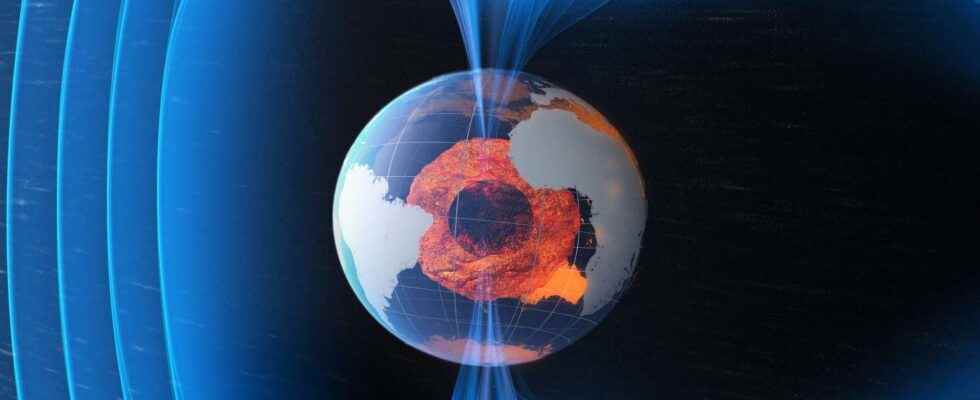By studying the behavior of iron under the extreme pressure and temperature conditions that prevail in the cores of super-Earth type exoplanets, a team of American researchers has shown that their magnetic fields, serving as a shield against cosmic radiation , are much more common and long-lasting than previously thought.
You will also be interested
[EN VIDÉO] Solar wind: the Earth protected by its magnetic field Storms from the Sun hurl high-energy particles into space that astronauts can see when their eyes are closed. If they don’t reach us, it’s because the Earth’s magnetic field protects us from the solar wind. Discover in video how this amazing shield works.
It was using one of the most powerful lasers on the planet that researchers at the Lawrence Livermore National Laboratory in the United States came to this conclusion. By placing a sample of iron under extremely high pressure conditions – 1,000 gigapascals (GPa), i.e. three times the pressure prevailing in the Earth’s inner core -, then by exposing it to laser radiation to heat it, they were able to determine the point of merger iron. The temperature at which iron melts under such pressure conditions is a key parameter in defining the size and nature of the inner nuclei liquids Earth-like planets.
Liquid iron to generate a shield against cosmic radiation
The existence of a liquid nucleus is an important argument to determine the presence of a magnetic field around a planet: on Earth, the magnetic field is generated thanks to the movements of convection in the outer liquid core, surrounding the inner core solid. This magnetic field protects us, among other things, from cosmic radiation, which is highly harmful to living organisms; the presence of a magnetosphere is thus considered necessary for the habitability of a planet.
According to their study, the researchers showed that a liquid metallic core would last longer in the case of a planet four to six times more massive than Earth, suggesting that exoplanets of the type super-earth would be likely to be equipped with a more durable magnetic protection than that of our Planet, protecting them more effectively from cosmic rays.
Interested in what you just read?
.
fs3
